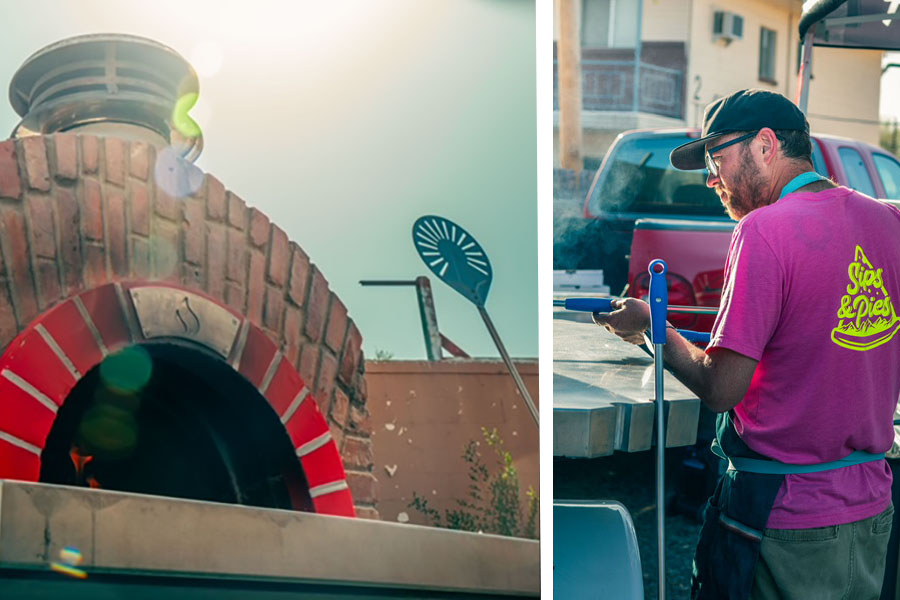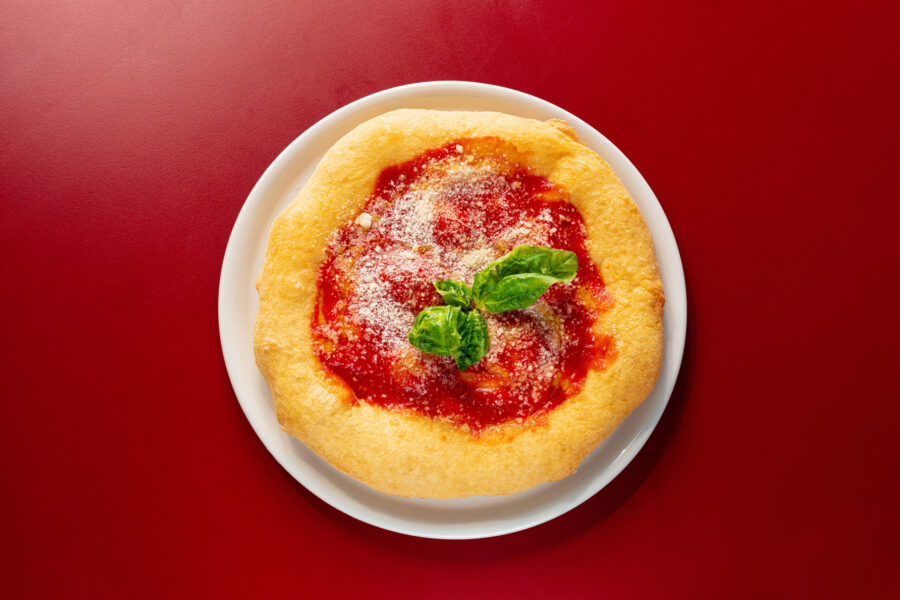
For many operators, dough is the major challenge to making great pizza. Here, we will address some of the things that operators can do to produce consistent quality dough.
Like so many other things in life, pizza dough performance can be typified by the old motto of “GI-GO” or “garbage in, garbage out.” Your dough will only be as good as the consistency that went into making and managing it.
Let’s start with the way the ingredients are prepared for use in making the dough. If they are volumetrically portioned, there is an inherent level of inaccuracy from dough to dough, but if the ingredients are weighted, the amount used from dough to dough will always be the same, hence we will have a more consistent dough providing a higher level of performance from dough to dough and from day to day.
Now that we have our dough ingredients scaled accurately, we can focus our attention on the finished dough temperature. I have said repeatedly that control of the finished dough temperature is the key to successful dough management. While there is no one specific temperature that is right for every operation, we have found that a good dough temperature to target is 70 to 75 F when the dough is to be stored in a reach-in cooler, and 80 to 85 F when a walk-in cooler is used. The finished dough temperature is controlled by the temperature of the water that is added to the dough. To find the correct water temperature for your dough, here is a simple formula:
3 times the desired dough temperature minus the sum of the room temperature, flour temperature and the friction factor of the mixer.
The friction factor can be calculated, for the friction factor value. If you are using a VCM (vertical cutter mixer) type of mixer, you won’t be too far off by using 60 for your friction factor value. Once we have our water temperature to give us our desired finished dough temperature, we can now work temperature of the water that is added but that’s another article, so for now, let’s on assembling the dough to the dough. To find the correct water temperature for your dough, here is a assume you’re using a planetary type mixer with a bowl and hook.
With this ingredients in the mixing bowl. The first ingredient to go in should be the simple formula: mixing arrangement, you can plug in 45 water, followed by the salt and sugar (if used). Next, add the flour and the yeast. If you are using IDY (instant dry yeast) it can be added dry directly to the flour, if you’re using ADY (active dry yeast) be sure to pre-hydrate/acti-vate it in 100 F water for 10 minutes before adding it to the flour. If you use compressed yeast, just crumble it right on top of the flour (contrary to popular belief, there is no reason to put it into the water and suspend it). The dough is now ready to be mixed. Begin mixing at a low speed just until all of the flour has been hydrated. This will take about two minutes or a little less. Next, add the oil or shortening and mix at low speed for another minute and then continue mixing in your normal manner. At the conclusion of mixing, measure the finished dough temperature and record it in a mixer’s logbook.
When the dough is properly mixed, and at the correct temperature, it should be taken directly to the bench for scaling and balling. Immediately place the dough balls into plastic dough boxes, or other dough storage containers. Wipe the dough balls lightly with oil and take directly to the cooler. Cross stack the dough boxes (if used) to facilitate cooling. The cross stack time will depend upon the weight of the dough balls, but in general the following can be applied:
- 8 to 12 ounces = 90 minutes
- 13 to 18 ounces = 150 minutes
- 19 to 24 ounces = 180 minutes
After cross stacking, the dough boxes are down stacked and nested to prevent drying. If you use plastic bags or place the dough balls on a sheet pan for storage, you should lightly oil the dough balls as you place them into the bags. Or if using sheet pans, oil the top of the dough balls after placement on the sheet pan, and cover with stretch wrap of a plastic bag. There is no need to cross stack or down stack. You can now kiss the dough good night.
The dough can be stored in the cooler for up to three days. To use the dough, remove about a three-hour supply of dough from the cooler, but do not uncover it. Allow the dough to temper at room temperature for about two-and-a-half hours and begin opening the dough balls into pizza skins as needed. The dough balls will be good to use for about three more hours after you begin opening them into skins. You may dock the dough skins with a dough docker if you wish, but it generally isn’t necessary as bubbling should be minimal. Any dough balls not needed within the three-hour window can be pre-opened and placed on a pizza screen and stored on a wire tree rack in the cooler (be sure to cover after 30 minutes in the cooler) for use later in the day. To use these pre-opened skins, just remove them from the cooler, leaving them covered, and allow then to temper at room temperature for about 30-minutes, and then use as you would any other pizza skin.
The procedure above does not allow for the dough to set out at room temperature between mixing and going into the cooler for any more time than what is necessary to cut/scale and ball it. This provides for a denser dough going into the cooler which is actually easier to efficiently cool than dough that is beginning to ferment because it was allowed to sit out at room temperature at some point prior to going into the cooler. This is an important aspect to this dough management procedure as it provides for uniform and consistent cooling of the dough — which allows it to be held for up to several days in the cooler and still provide good dough performance and finished crust quality characteristic.
You may have also noted that at the dough mixer, the oil was not added along with the water. When this hap- pens, the oil will float to the top and come into direct contact with the flour, thus allowing for some of the flour to become oil soaked. Since oil soaked flour does not allow for the development of gluten (the stuff that holds the dough together and provides for the stretch), we tend to get differences in the dough that can be seen in the mixing bowl. This has lead to the conclusion that the weather has an influence on the amount of water the dough needs. This could not be any further from the truth. In- stead, what is being seen is just a lack of dough strength due to less gluten being developed, so more flour is added to the dough, thus upsetting the balance of the dough formula. By adding the oil later as described, the flour is allowed to fully hydrate with the water so the full gluten potential is developed from the flour.
Tom Lehmann is a director at the American Institute of Baking in Manhattan, Kansas.






